Volume 10, Issue 2
Displaying 1-10 of 10 articles from this issue
- |<
- <
- 1
- >
- >|
-
1987 Volume 10 Issue 2 Pages 75
Published: February 10, 1987
Released on J-STAGE: September 10, 2009
Download PDF (305K) -
1987 Volume 10 Issue 2 Pages 76-80
Published: February 10, 1987
Released on J-STAGE: September 10, 2009
Download PDF (1270K) -
1987 Volume 10 Issue 2 Pages 81-85
Published: February 10, 1987
Released on J-STAGE: September 10, 2009
Download PDF (1113K) -
1987 Volume 10 Issue 2 Pages 86-90
Published: February 10, 1987
Released on J-STAGE: September 10, 2009
Download PDF (1106K) -
1987 Volume 10 Issue 2 Pages 91-96
Published: February 10, 1987
Released on J-STAGE: April 23, 2010
Download PDF (1082K) -
1987 Volume 10 Issue 2 Pages 97-101
Published: February 10, 1987
Released on J-STAGE: September 10, 2009
Download PDF (961K) -
1987 Volume 10 Issue 2 Pages 105-114,103
Published: February 10, 1987
Released on J-STAGE: September 10, 2009
Download PDF (1657K) -
1987 Volume 10 Issue 2 Pages 115-122,103
Published: February 10, 1987
Released on J-STAGE: September 10, 2009
Download PDF (1379K) -
1987 Volume 10 Issue 2 Pages 123-129,104
Published: February 10, 1987
Released on J-STAGE: September 10, 2009
Download PDF (1166K) -
1987 Volume 10 Issue 2 Pages 130-133,104
Published: February 10, 1987
Released on J-STAGE: September 10, 2009
Download PDF (750K)
- |<
- <
- 1
- >
- >|
